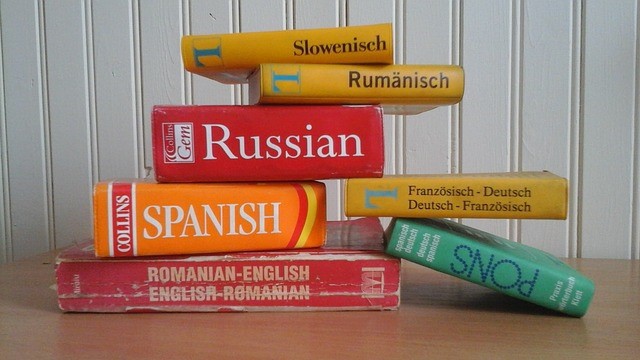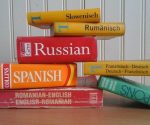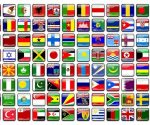Like any industry and profession, Translators have their jargon. Terms such as translation, localisation, and transcreation can be confusing. It doesn’t help that they sound quite similar or that their definitions overlap in several ways, but it’s important to know the differences between these language services and the challenges they tackle.
Let’s take a look at what each service entails so that you know what it is that your project actually needs:
Translation
This one may seem obvious, but let’s provide a simple definition for clarity’s sake. Translation is the process whereby content is taken from one language and directly switched it into another.
Essentially, it takes into consideration many locale forms of syntax, grammar, etc. Translation can be conducted either by Machine Translation (MT) or by human translation.
Machine translations typically consist of word-by-word or phrase-by-phrase matches of the original content. This can be a bit problematic. Let’s consider to phrase Where is the restroom? This phrase translates well as it is, though a lot of countries call this room something different, like washroom, toilets or bathroom.
When it comes to human translation, the translator working on a piece of content should be a native speaker of the target language whilst fully understanding the source language simultaneously. Moreover, the translator should have expertise in a specific field, so that the translation is technically correct. For example, since our services specialise in iGaming translations, our team members are huge fans of online gaming, e-sports, and betting games community.
Typical translation work consists of but is not limited to, contracts, technical manuals, and documents.
Localisation
Localisation is a process which involves adapting and customising content to a particular language and culture.
It focuses on making the text read like it has been originally produced in the country of the target audience, not a text that has simply undergone direct translation.
Localisation takes things a step further and starts considering other factors that will engage the target audience, such as cultural nuances and cultural expectations, thus it adopts a broader, conceptual approach as opposed to a direct translation.
The process often begins by looking at the topics and themes of a brand and its content, to ensure cultural sensitivity.
Aside from the bigger picture of culture, law, and politics, localisation also sharpens up the finer details to make content connect with audiences more efficiently. All of this means honing in on the fine details of date and time formats, the colours in your marketing schemes and the multimedia you’re using.
Typical localisation work involves websites, video games, learning & training content, and software.
A great example of website localisation is Nescafé, as a brand it has produced many individual designs and layouts, providing users with fully translated and localised websites. As such, the brand has taken time to understand the elaborate differences between one market and the other to establish a maximum impact on each target market.
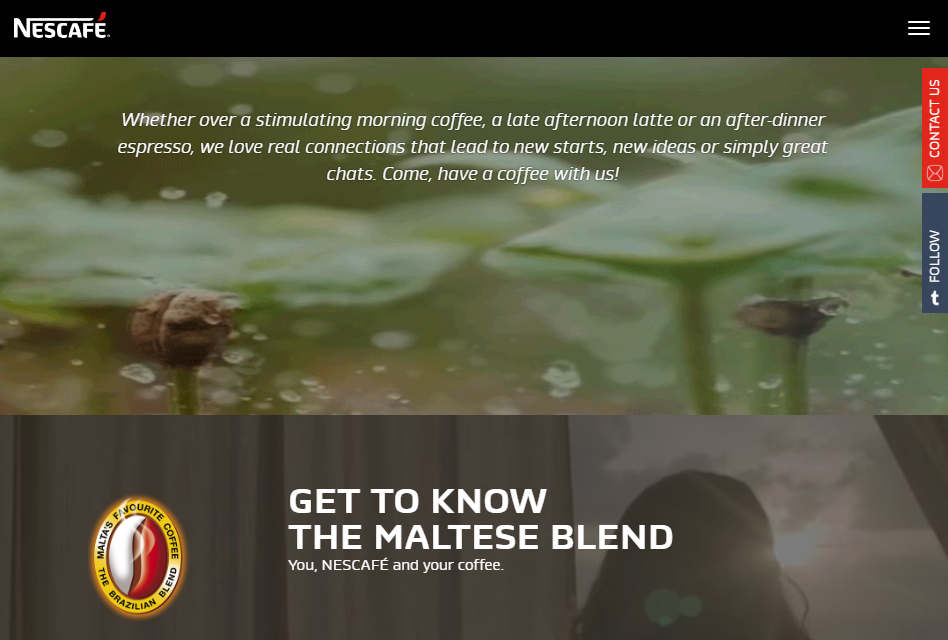
Targeted towards the Maltese market, the home page above greets users with a static logo and short paragraph catered towards Western ideals, while the background video appeals to the growing interest in video marketing.
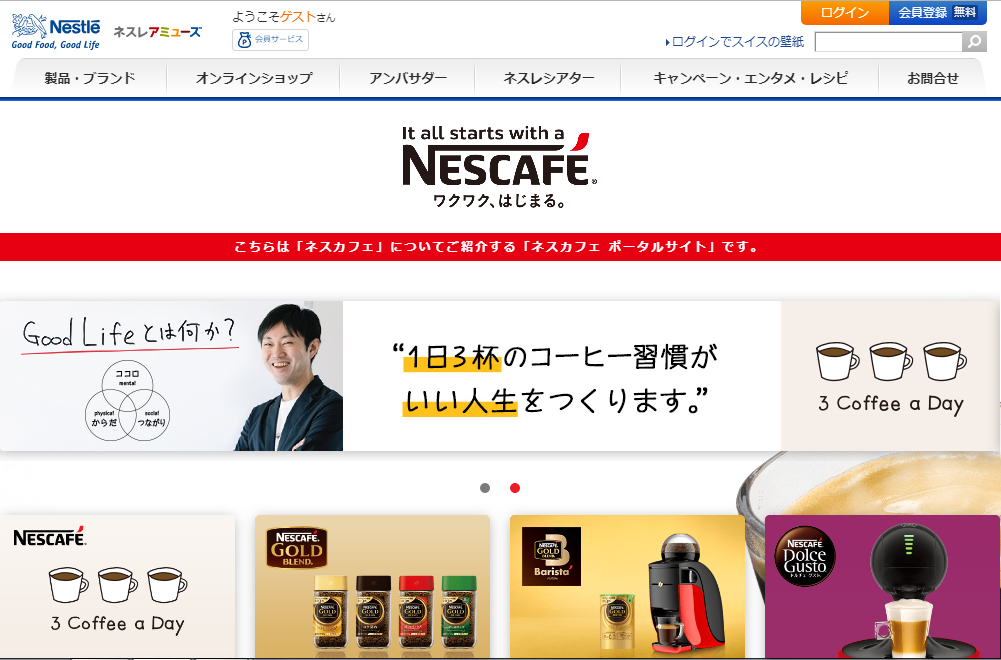
The Japanese Nescafé website looks quite different from its Maltese counterpart. It features a more modular design and appeals to a market with more interest in images and descriptions than simplicity. The website also has included Nescafé’s parent company Nestle’s logo in its header, which Japanese audiences are more acquainted with.
Transcreation
This process involves the adaptation of a message from one language to another while maintaining its original intent, tone, style, and context.
Transcreation (also called creative translation) may entail copywriting, image selection and other transformations to adjust the message to maintain relevance for audiences across the globe.
It makes sure that the desired impact and emotion of your message is not lost in translation, and that the original style, intent, and tone are kept. Translation stays faithful to the original text, localisation gives it a cultural tweak, while Transcreation uniquely customises the material for your target market. It is a blend of translation and creative writing so that the local brand message resonates with new audiences on the intended emotional level.
The person undertaking the transcreation task must thoroughly understand the brand’s desired outcomes, and be given the freedom to not only translate the original but also to make crucial changes to it in the process.
If there is something your brand needs to accurately communicate in all languages, transcreation may be an integral part of your products’ and content’s localisation program.
Transcreation work generally includes e-Commerce, marketing material, slogans, and retail.
A superb example of successful transcreation is when Coca Cola launched their “Share a Coke” campaign back in 2013 and 2014. The Coca Cola logo on the label of the bottles was switched with a simple phrase such as: “Share a Coke with Sarah”.
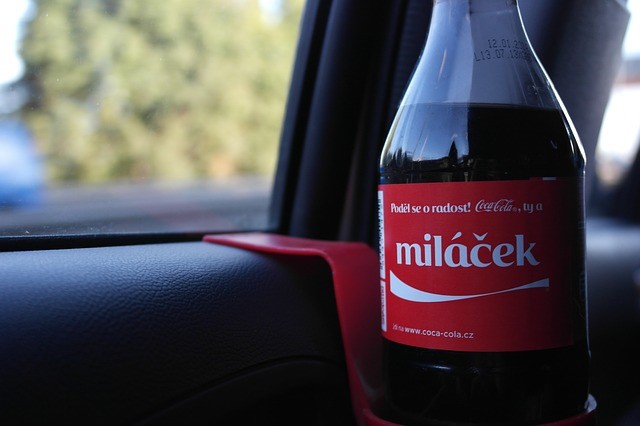
On each coke label, there was a different name, and an enormous amount of names were utilized for this campaign, which simply captivated the public. Yet what is even more impressive is how they adapted this campaign for their Chinese market.
In China, it’s not respectful to address someone by their first name. Generally, you would address a Chinese person by his/her surname followed by honorific titles, yet this entire campaign was about personal connection.
But how do you connect with someone personally without using their first name? Coca Cola navigated through this cultural barrier by using terms such as “classmate” and “close friend” as opposed to using names.
Different content was developed here to not only meet business objectives but to stay true to the marketing campaign. Images and layout were changed to meet product needs and local expectations all whilst brand vocabulary was expanded and enhanced.
These services are essential if you’re set on going global. Our services can help you extend your brand to worldwide audiences in accordance with your needs.

